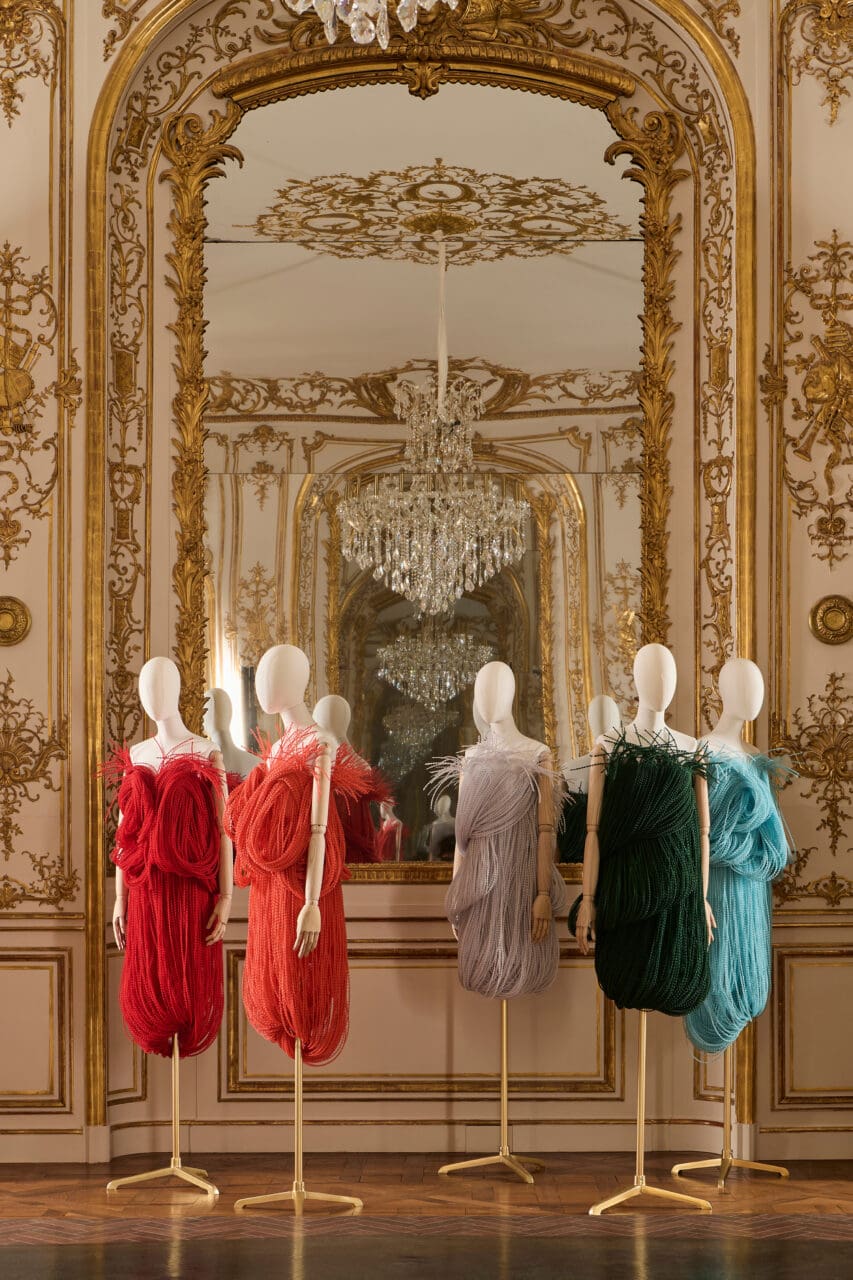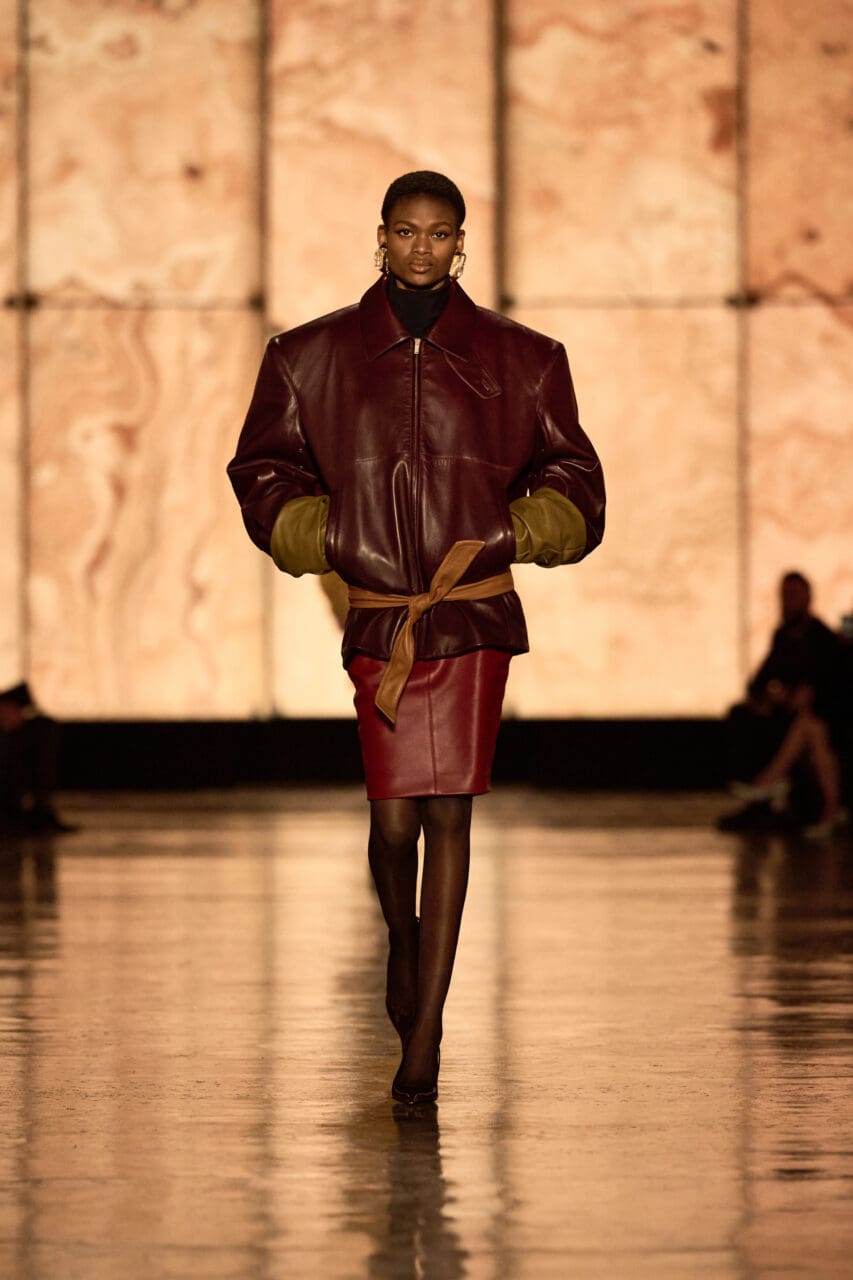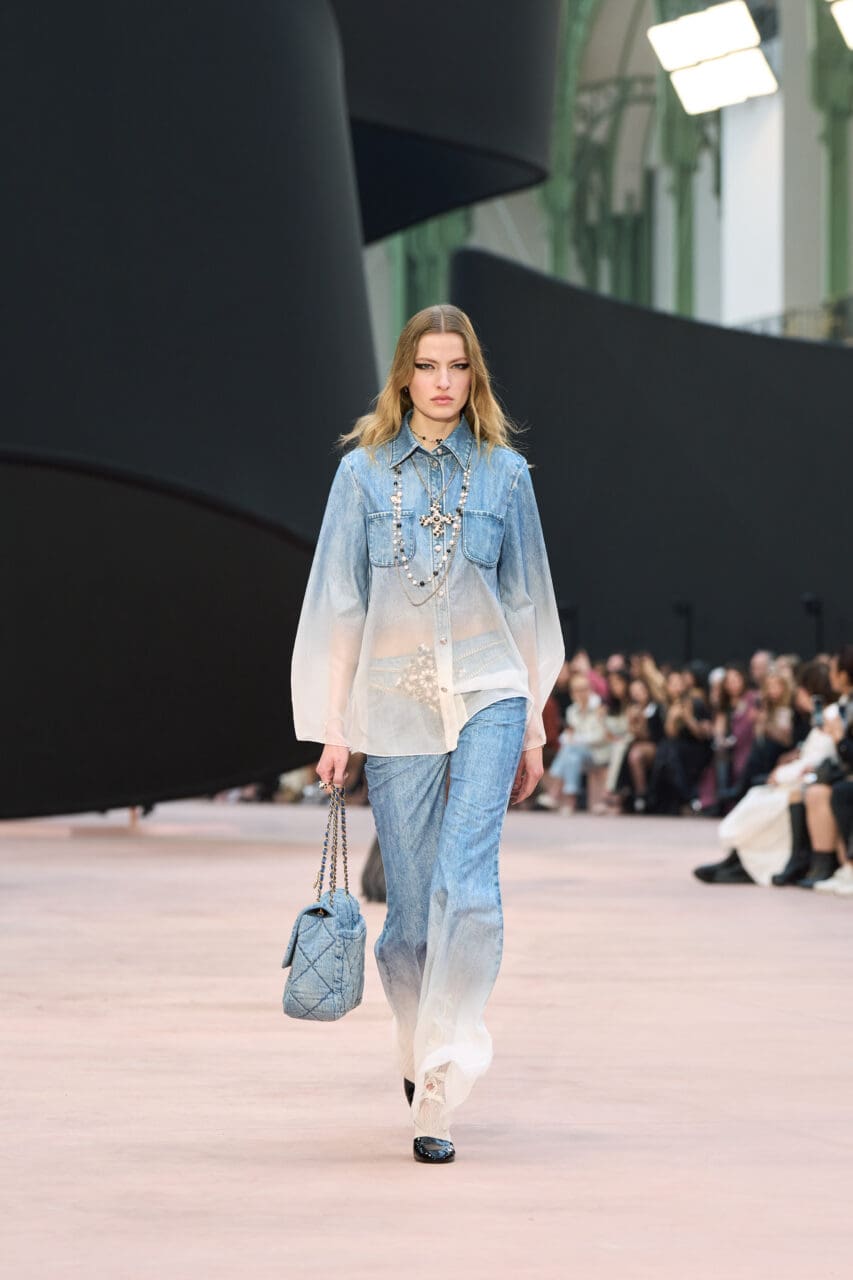Modernity and maternity have intertwined across time at Fendi to beget a form of fashion eternity—or at least 100 years of it so far and counting. For this first womenswear Fendi season of its centennial year, Kim Jones both considered and collaborated with the four generations of women who have shaped its course.
Over the sound system, we heard Silvia Venturini Fendi discussing the house and the nature of beauty and fashion with her mother, Anna. It was Anna’s mother, Adele, who opened the first Fendi shop in the Eternal City back in 1925. And it is Adele’s great-granddaughter, Delfina, who Jones has cited as his central Fendi muse during his time here. Today, as is customary, Delfina had designed the jewelry and Silvia the accessories.
Jones is a masterful editor—he has to be, to handle all the collections on his plate—and here he combined that attribute with his core design métier to present a collection that spanned Fendi’s century. What kept it cohesive was the combination of house craft, color, and an attitude that stemmed from the disruptive jazz-age modernism—the first rock and roll—of the 1920s.
We started and finished with a series of gauzy drop-waist dresses embroidered with Art Deco graphics or pearl-edged botanical reliefs. Although there was the occasional fringed hem, these were no nu-flapper period pieces: Jones minimized the silhouettes and updated the necklines in a manner that made them echo ’90s slip dresses or even sportswear hybrids.
Between these foundational bookends, Jones roamed freely, mixing beige shearling robes, white crocodile suede T-shirts and skirts, and a mesh vest edged and waisted with house-ochre Cuoio Romano. The collection included an extremely fine (and hopefully menswear-encompassing) collaboration with heritage U.S. boot maker Red Wing. The resulting Selleria-stitched moccasin work boots emphasized the history of family feminine industry Jones was celebrating, but also, when worn with ruffled floral socks and clematis- and jasmine-pattern tea dresses, delivered unmissable grunge overtones.
Fendi’s 1990s moment of commercial nirvana was further explored in a series of tactile and boho iterations of the Baguette, which were sometimes fringed and amplified in volume. These were heaped with curios, charms, and jewelry, including furry bouquets and ruffle-edged earbud cases.
Today, Jones was exploring the contradictory nature of what’s “modern”—its constant permanence and impermanence—through his decorative references to different phases of fashion and also to a line of women all different but inherently connected. While Adele was responsible for Fendi’s conception, it was her daughters Anna, Alda, Paola, Carla, and Franca who first propelled Fendi into international renown. Over the PA, we heard Anna recall: “Our mother always said, ‘You are like a hand. There are five of you, the fingers. They are different from each other; they are complementary to each other.’” When you hear any mention of DNA in a fashion or luxury context, it tends to be marketing rhetoric—not at Fendi.
Editor
Kaitlyn LaiCredit
Lead image: Umberto Fratini / Gorunway.com





